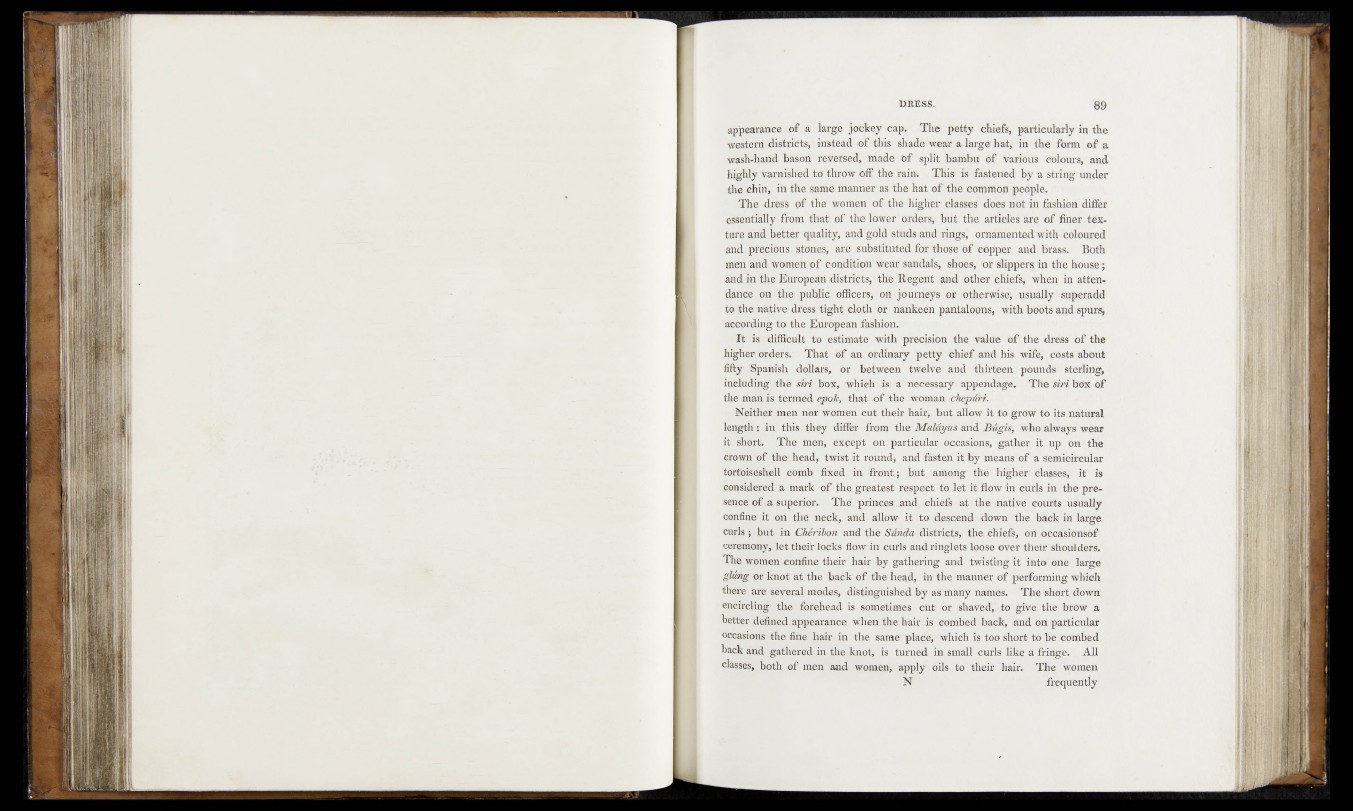
DRESS. 89
appearance of a large jockey capers The petty chiefs, particularly in the
western districts, instead of this shade wear a large hat> in the fhrm of a
wash'hand bason reversed, made of split bambu of various colours, and
highly varnished to throw off the rain. This is fastened by a string under
the chin, in the same manner as the hat of the common people.
The dress of the women of the higher classes does not in fashion differ
essentially from that of the lower orders, but the articles are of finer texture
and better quality, and gold studs and rings, ornamented With coloured
and precious stones, are substituted for those of copper and brass. Both
men and women of condition wear sandals, shoes, or slippers in the, house;
and in the European districts, the Regent and othet chiefs, when in attendance
on the public officers, on journeys or otherwise, usually superadd
to the native dress tight cloth or nankeen pantaloons, with boots and spurs,
according to the European fashion.
It is difficult to estimate with precision the value of the dress of the
higher orders. That of an ordinary petty chief and his wife, costs about
fifty Spanish dollars, or between twelve and thirteen pounds sterling,
including the siri box, which is a necessaty appendage. The siri box of
the man is termedepo&, that of the woman chep-tiri.
Neither men nor women cut their hair, but allow it to grow to its natural
length: in this- they differ from the Malayus and Bégis, who always wear
it short. The men, except on particular occasions, gather-it up 7 on the
crown of the head, twist it. round, and fasten it by means of a semicircular
tortoiseshell oomb fixed in front ; but among the higher classes, it is
considered a mark of the greatest respeet to let it-flow in curls In the presence
of a superior, The princes and chiefs at the native courts usually
confine it;on the neck, and allow it to descend down the back in large
curls ; but in Chéribon and the Stinda districts, the chiefs, on occasiónsóf
cei’emony, let their locks flow in curls and ringlets loose over thoir shoulders.
The women eonfine their hair by gathering and twisting it into one large
glmg or knot at the back of the head, in the manner of performing, which
there are several modes, distinguished by as many names. The short down
encircling the forehead is sometimes cut or shaved, to give the brow a
better defined appearance when the hair is combed back, and on particular
occasions the fine hair in the same plaee, which Is too short to-be combed
back and gathered in the knot, is turned in small curls like a fringe. All
classes, both of men and women, apply oils to their hair. The women
N frequently